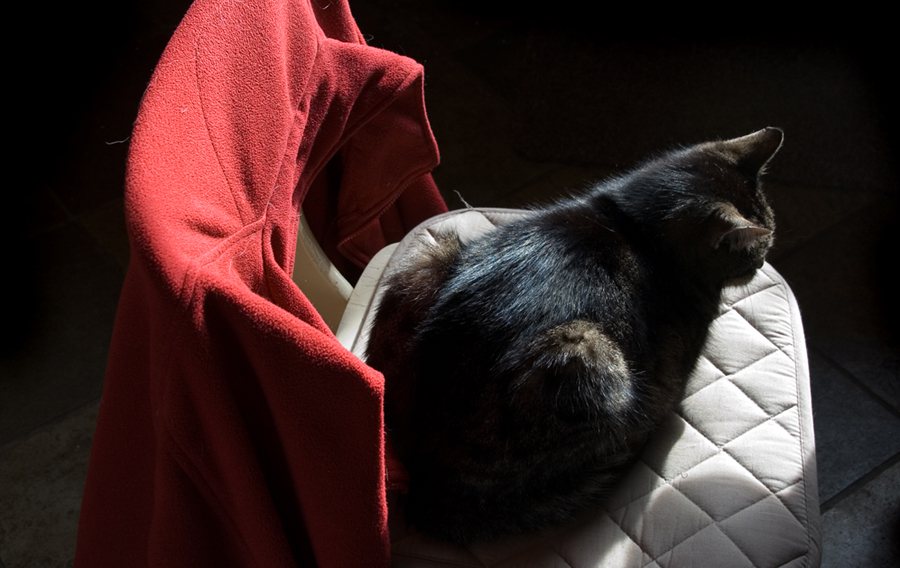It’s summertime for half the world. On these, the hottest days of the year, office workers huddle under blankets. Complaints trend on Twitter with posts like, “I could preserve dead bodies in the office it’s so cold in here.” And style bloggers offer advice for layered looks for coming in and out of the cold.
半個地球都在過夏天。在一年中最熱的日子裡,辦公室職員們蜷縮窩在毯子下。推特的熱門貼文抱怨像是:「辦公室冷到快可以當太平間了。」時尚部落客提供洋蔥式穿法的建議,讓大家適應室內外溫差。

Why are America and so many other places so over air-conditioned? It seems absurd when you consider the money and energy wasted. Architects, engineers and energy experts sigh with exasperation when asked for an explanation. They tick off a number of reasons – probably the most vexing is cultural.
為何美國和這麼多其他地方如此把冷氣用過了頭?顧及浪費掉的金錢和能源,這似乎很荒唐。被問到這個問題時,建築師、工程師和能源專家的嘆息帶有惱怒。他們列舉很多原因,或許最惱人的就是文化。
“Being able to make people feel cold in the summer is a sign of power and prestige,” said Richard de Dear, director of the Indoor Environmental Quality Laboratory at University of Sydney, Australia, where excessive air-conditioning is as prevalent as it is in the United States. He said the problem is even worse in parts of the Middle East and Asia.
「能讓人在夏天覺得涼快是權力與特權的象徵,」澳洲雪梨大學室內環境品質實驗室主任李察.迪.迪爾說,澳洲過度使用空調像美國一樣普遍,中東與亞洲部分地區更嚴重。
Commercial real estate brokers and building managers say tenants specify so-called chilling capacity in their lease agreements so they are guaranteed cold cachet. Luxury stores are kept colder than more down-market ones.
商用不動產仲介商和大廈管理人員說,房客會在租約中明列冷卻能力條款,確保冷氣夠冷。精品業者會把冷氣開得比平價商場更冷。
There’s also the misconception that colder temperatures make workers more productive when, in fact, research shows the opposite. Studies have shown people work less and make more mistakes when the air temperature is 20 to 22 degrees Celsius versus 23 to 24 degrees. Some research indicates feeling cold can take a psychological toll, making people untrusting.
還有一種誤解,認為較低溫度能讓員工更具生產力,其實研究顯示恰好相反,氣溫低到攝氏20至22度時,比在23至24度時工作效率更低,更易犯錯。有些研究顯示寒冷會增加心理負擔,讓人缺乏信任感。
The problem is compounded by building managers who, surveys indicate, typically don’t adjust the temperature higher in summertime when people wear lighter clothes.
研究還顯示,夏天人們穿著較輕薄,大廈管理員通常不會調高溫度,這讓問題變得更複雜。
Air-conditioning systems are also usually designed for worst-case scenarios – full occupancy on the hottest day of the year. As part of that calculation, designers might have factored in older computers and less energy-efficient lighting that radiate much more warmth than the machines and bulbs used today. And, engineers say, they might add a 20 percent upward correction, just to be on the safe side.
空調系統通常針對最惡劣情況設計:一年最熱的一天,住房全滿。設計師在計算時或許得考慮較舊型電腦、效能沒那麼高的燈具,發熱比現在的機器和燈泡高。工程師說,為安全起見設計時會增加20%校正值。
“It’s analogous to a high-tune car where you have to keep your foot on gas to keep it from stalling out,” said Edward Arens, a professor of architecture at the University of California, Berkeley.
柏克萊加州大學建築系教授愛德華.艾倫斯說:「有點像調校到高馬力輸出的車子,得把腳放在油門上才不會熄火。」
Paradoxically, another reason for aggressive air-conditioning is energy-efficient building construction. Better sealing and insulation keeps air-conditioning from entering. So cool air is often kept blasting to meet mandated air quality standards for levels of carbon dioxide that build up in the absence of outside air. The cool air also controls humidity, which can lead to mold.
弔詭的是,節能建築也是空調開很凶的原因。節能建築密閉和隔熱性較佳,阻擋了新鮮空氣入內。少了外來空氣,為達到二氧化碳濃度的室內空氣品質標準,冷氣常得開得很強。冷空氣還能控制會導致發霉的濕度。
While architects like Mr. Arens point the finger at engineers for designing air-conditioning systems with too much capacity, engineers point the finger back at architects who often have an aesthetic aversion to thermostats.
艾倫斯等建築師指責工程師把空調性能設計得太強,工程師則反批建築師通常從美學角度出發,討厭恆溫器。
“Architects try to convince mechanical engineers to hide sensors so they don’t mess up their beautiful design,” said Jon Seller, general manager of Optegy, an energy management consulting firm based in Hong Kong that specializes in air-conditioning systems. As a result, he said, sensors wind up in out-of-the-way places like air inlets on the ceiling, where, because heat rises, they provide less than accurate readings.
專長空調系統的香港能源管理顧問公司Optegy總經理瓊.謝勒說,「建築師試圖說服機械工程師把恆溫器藏起來,以免破壞他們的美麗設計,」如此一來,恆溫器都裝在邊邊角角,如天花板上的通氣口,這些位置溫度較高,提供的讀數往往不準。
Computer scientists have developed a smartphone app that making people the thermostats. Users can tell the app, called Comfy, whether they are hot, cold or just right. It learns trends and tells the system when and where to throttle up or throttle back the cooling. The developers claim Comfy-equipped buildings realize savings of up to 25 percent in cooling costs.
電腦科學家開發出一款智慧型手機應用程式,把人們自己變成恆溫器。用戶可以告訴這個Comfy程式自己覺得太熱、太冷還是剛好。程式記住整體趨勢後,通知空調系統何時何處提高或減弱冷氣。開發者表示配備Comfy的建築最多能省25%冷氣費。
“We have a lot of data that people are most comfortable if they have some measure of control,” said Gwelen Paliaga, head of a committee that develops standards for thermal comfort for the American Society of Heating, Refrigerating and Air Conditioning Engineers.
「我們有很多數據顯示,人們如果對溫度能有一定程度的控制,會覺得最舒服,」桂倫.帕里亞加表示。他主持的委員會替「美國暖氣、冷藏與空調工程師協會」制定人體舒適溫度的標準。
Of course, for fresh air and comfort, engineers and architects tend to agree the most effective control is being able to open and close the windows. No app required.
當然,為了呼吸新鮮空氣和舒適考量,工程師和建築師大概都同意,最有效的控制辦法還是開關窗戶。無需應用程式。